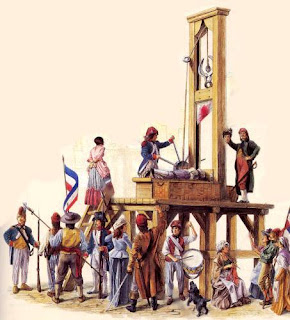Marie Antoinette & The Wine Grower
Earlier this week I posted a piece about Marie Antoinette's Flaws. I explained she could be thoughtless, selfish, childish, and spontaneous. Today, I would like to share a story about one of her spontaneous acts that was thoughtful and selfless.
On a warm autumn day in 1773, Marie Antoinette and a few members of her coterie settled themselves upon the velvet squabs of a gilded carriage, excited to be taking part in a royal stag hunt. The women neatly arranged the folds of their voluminous gowns, the royal hounds bayed, the horses pranced and nickered, and then, they were off!
The careless, carefree royal party thundered on, anxious to catch their prey. Along the way, one of the riders accidentally ran over a wine grower who been toiling in a field. The unfortunate, unsuspecting man was seriously wounded.
 Few in the royal party showed much concern for the peasant, but Marie Antoinette was deeply moved. The dauphine ordered the postilion to stop the carriage, then she leaped out and tended to the wounded man. Later, she would provide financial support for the man's family until he was well enough to work again.
Few in the royal party showed much concern for the peasant, but Marie Antoinette was deeply moved. The dauphine ordered the postilion to stop the carriage, then she leaped out and tended to the wounded man. Later, she would provide financial support for the man's family until he was well enough to work again.
Marie Antoinette's act of compassion was immortalized in a pencil and ink drawing by Jean-Michel Moreau the Younger. The print, titled Act of Kindness by the Dauphine, October 16, 1773, now hangs in a museum in Vienna.
On a warm autumn day in 1773, Marie Antoinette and a few members of her coterie settled themselves upon the velvet squabs of a gilded carriage, excited to be taking part in a royal stag hunt. The women neatly arranged the folds of their voluminous gowns, the royal hounds bayed, the horses pranced and nickered, and then, they were off!
The careless, carefree royal party thundered on, anxious to catch their prey. Along the way, one of the riders accidentally ran over a wine grower who been toiling in a field. The unfortunate, unsuspecting man was seriously wounded.
 Few in the royal party showed much concern for the peasant, but Marie Antoinette was deeply moved. The dauphine ordered the postilion to stop the carriage, then she leaped out and tended to the wounded man. Later, she would provide financial support for the man's family until he was well enough to work again.
Few in the royal party showed much concern for the peasant, but Marie Antoinette was deeply moved. The dauphine ordered the postilion to stop the carriage, then she leaped out and tended to the wounded man. Later, she would provide financial support for the man's family until he was well enough to work again.Marie Antoinette's act of compassion was immortalized in a pencil and ink drawing by Jean-Michel Moreau the Younger. The print, titled Act of Kindness by the Dauphine, October 16, 1773, now hangs in a museum in Vienna.



I am so happy to have discovered your blog. As a child I had a serious crush/fascination with Marie Antoinette. It is refreshing to know I am not alone in this world!
ReplyDeleteThank you for this nice story about Marie-Antoinette. It is nice to read good stories about her.
ReplyDeleteShannon ~ Thank you for visiting my blog. I am so glad you enjoyed my post. Be sure to look at my other posts (Listed in the column to the right) and you might want to follow me on Twitter (I post loads of tidbits) I am: @18thCFrance
ReplyDeleteAll the best,
Leah Marie
(PS - You are definitely NOT alone :)
I believe it was Marie Antoinette's common decency that offended so many of her enemies, both high and low.
ReplyDeleteThe fact that it was then considered to be an extraordinary act of kindness to tend to someone whom you'd run over on the road, tells you a great deal about the level of morality common in that era. We might not have advanced much in the moral sense since that time, but at least we don't let people run over each other in the streets with no repercussions.
Poor Antoinette, denigrated and persecuted by both the nobility and the "common", and spared vicious mistreatment by neither. Why is it always the gentlest, most harmless people that end up paying for all the crime and injustice in the world?